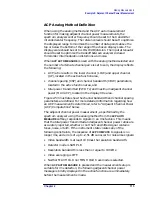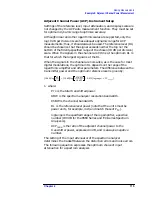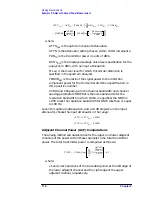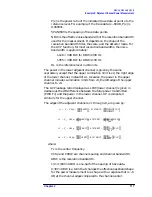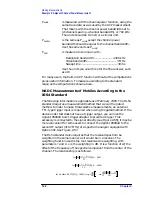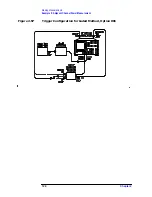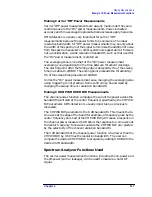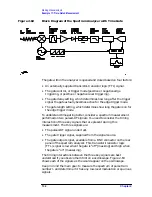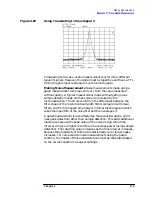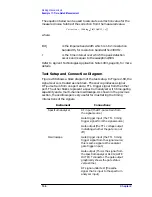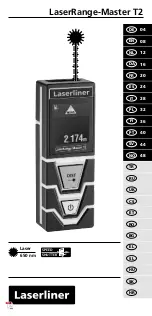
Chapter 2
125
Making Measurements
Example 10: Power Measurement Functions
Example 10: Power Measurement Functions
What are the Power Measurement Functions?
The spectrum analyzer can make several different types of power
measurements on complex communication signals. These are in
addition to the adjacent channel power measurements discussed in
Example 9. These measurements are available as built-in functions in
the spectrum analyzer
MEAS/USER
menu. These measurements include
the following:
• The occupied bandwidth of a modulated signal is the bandwidth that
contains the specified (usually 99.00%) portion of the total
transmitted power.
• The channel power within a frequency range, such as a
communications channel, is a calculation of the total power of the
signal from its spectrum.
• The carrier power of a burst communications signal can be computed
while the burst is on and the carrier leakage can be computed while
the burst is off. The measurement is made in zero span with a wide
resolution bandwidth (compared to the modulation, when on).
Using Power Measurement Functions
RMS Detection
For most power measurements, it is desireable to respond to signals in
an RMS fasion. This means that the power measured is accurately
reported, whether the signal contains tones, noise, or other signals. If
the spectrum analyzer is not configured for RMS detection (also known
as power detection), CW-like signals (tones) will be measured correctly,
but noise-like signals (including most digitally-modulated signals) will
not be correctly measured.
The power measurement functions compute the RMS of all the
applicable measurement cells (display buckets). If the data in those
cells is unbiased, RMS detection occurs. To keep the data unbiased
requires:
• The detection mode must be SAMPLE. Other modes, such as
POSitive PEAK, are biased differently for noise-like signals than for
CW-like signals.
• The video bandwidth (VBW) should be at least 10 times the
resolution bandwidth (RBW). If it is not, video filtering of a
noise-like signal on a logarithmic (dB) display scale biases the
measurement.
Summary of Contents for 8560E
Page 21: ...21 1 Quick Start Guide ...
Page 48: ...48 Chapter1 Quick Start Guide Manuals Available Separately ...
Page 49: ...49 2 Making Measurements ...
Page 164: ...164 Chapter2 Making Measurements Example 13 Making Pulsed RF Measurements ...
Page 165: ...165 3 Softkey Menus ...
Page 182: ...182 Chapter3 Softkey Menus Menu Trees ...
Page 183: ...183 4 Key Function Descriptions ...
Page 228: ...228 Chapter4 Key Function Descriptions Key Descriptions Figure 4 3 CRT Alignment Pattern ...
Page 289: ...289 5 Programming ...
Page 323: ...Chapter 5 323 Programming Math Functions Figure 5 10 Display Units ...
Page 339: ...339 6 Programming Command Cross Reference ...
Page 369: ...369 7 Language Reference ...
Page 654: ...654 Chapter7 Language Reference VTL Video Trigger Level ...
Page 655: ...655 8 Options and Accessories ...
Page 665: ...665 9 If You Have a Problem ...
Page 674: ...674 Chapter9 If You Have a Problem Power Requirements Figure 9 2 AC Power Cables Available ...



